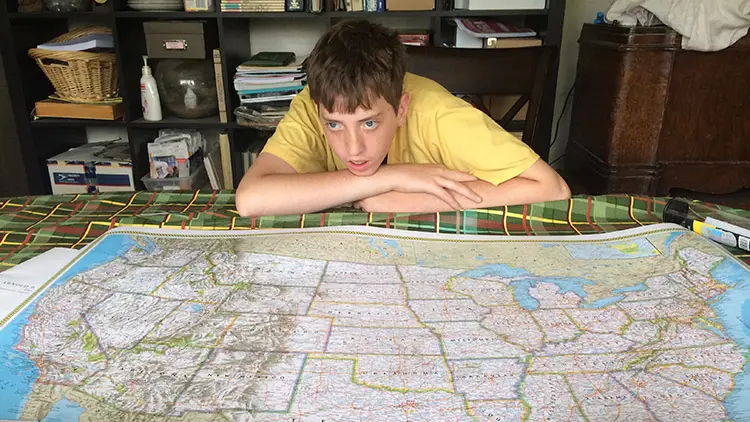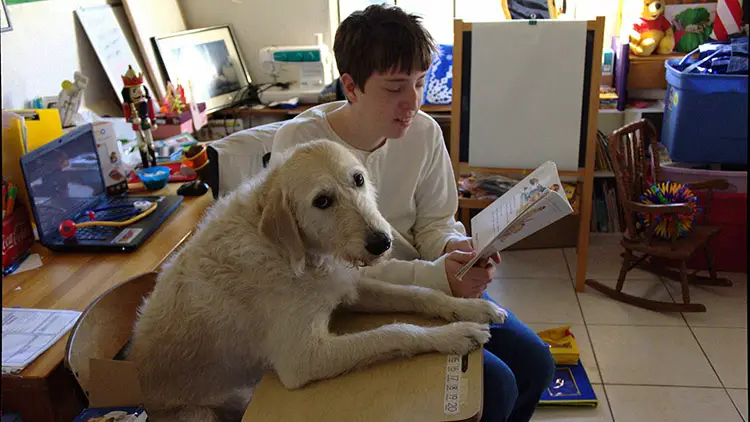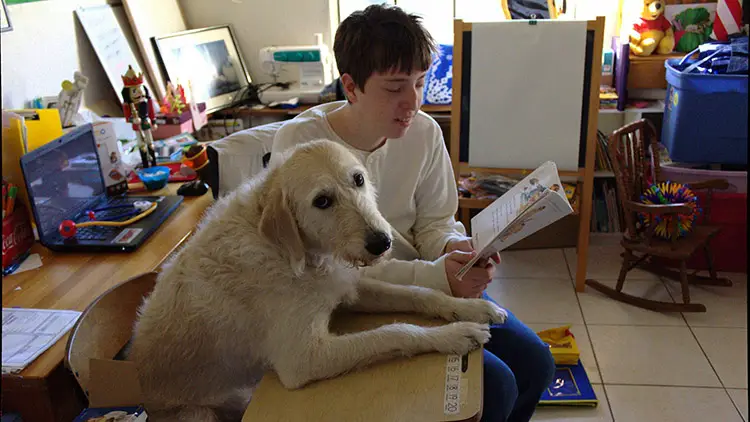Twenty-five years ago CRPE was founded on the idea of the school as the locus of change. Today we are reexamining our old assumptions in light of new technical possibilities, changes in the economy, and a recognition that even the most effective schools may need to develop new approaches to better serve students whose needs warrant more individualized learning pathways or supports. This post is part of a series on what the school or learning system of the next 25 years might look like.
Beginning in third grade, Brandon Berman got kicked out of school or pulled out by his mother almost every year. Autism, a rare form of muscular dystrophy, and a range of other complications that triggered seizures and required him to eat through a feeding tube made him a difficult fit for the public school system in Volusia County, Florida.
Ironically, each time another frustrated team of educators said their best efforts didn’t seem to be working, and his mother threw up her hands and pulled him out of school, he started making actual progress. Donna Berman took time away from her job as a nurse to teach him at home, full-time. The school district’s hospital/homebound program provided four hours of instruction per week with a certified teacher. With one-on-one attention, Donna started seeing signs of real progress. Brandon started learning to read. His instructor set up a mock grocery store in the family’s pantry where Brandon learned to compute change, making some headway in math.
Each year, Donna Berman would try again to enroll her son in public schools, often with a newly tweaked IEP or a newly selected school district program. Nothing seemed to work. Brandon was placed in segregated classrooms for students with emotional or behavioral disorders, where his mother worried he would mimic the behavior of his classmates. He was placed in general education settings, where he struggled to navigate lunch lines and class changes on his own. He was suspended often, and was accused of battery on a school employee three times for incidents like one in which he kicked a guidance counselor.
When Brandon reached middle school, Donna Berman grew so frustrated that she pulled him out of the school district entirely and used a McKay Scholarship—Florida’s voucher for children with special needs—to enroll him in a private school. In doing so, she had to sign away his rights to a free and appropriate public education in the least-restrictive setting under the Individuals with Disabilities Education Act. But where her experience fighting with public schools on behalf of her son taught her the limitations of those federal civil rights protections, her experience in a private school taught her their necessity. When his new school school didn’t honor a pledge to provide Brandon with a nurse, Donna Berman had no meaningful recourse. When she took a closer look at the instruction the school was providing and discovered she was essentially sending her son to a “glorified babysitter,” she knew it was time to return to the public system.
Just when Berman felt she had nowhere to turn, a newspaper article about a contentious proposal in the Florida legislature gave her new hope. In 2014, the state created the Personal Learning Scholarship Account program. It would become the nation’s second and largest education savings account program, allowing parents of children with specific disabilities to obtain a sum of money equal to what the state would have spent to educate them in public schools. Donna Berman was applicant number 11.
The program, now called the Gardiner Scholarship, allowed Berman to recreate the kind of educational experience Brandon received at home through the hospital/homebound program. She could use the money to pay for books, an iPad, and other supplies. She also had the option of paying for part-time tutors.
180904-map.jpg

Brandon died in the fall of 2017, during what was technically his senior year of high school, due to complications from his conditions. There’s no doubt Brandon was unique. But the challenges his mother encountered in the public education system may seem all too familiar to other parents of exceptional students. And they highlight some ways the system might improve.
Information and Guidance
From the beginning, Donna Berman was on her own to figure out what services Brandon was entitled to and which programs inside or outside the district might stand a chance of serving him. When one of them didn’t work, she was on her own to uncover alternatives. When she thought she found one at a nearby private school, she was on her own to figure out how that affected her rights. And once she received a Gardiner Scholarship, she was on her own to figure out what curriculum providers might be effective for her son.
Now Berman spends a good deal of time helping other parents navigate special education for their own children. They, too, are all too often on their own. It’s possible to imagine a different reality in which these parents have access to trained advocates who can help them understand their rights and options, rather than having to fend entirely for themselves.
Flexibility and Co-Production
Early on, Berman chose to handle the hospital/homebound program in a way that required her to become her son’s primary educator. Later, she replicated that approach with the help of an education savings account. Some students with special needs could benefit from similar arrangements. However, Berman acknowledges her approach might be infeasible for a single parent or a parent who can’t take time away from work like she could. How can policies support the kinds of arrangements that worked for Brandon, while also accommodating families who might require something different?
Social Services Integration
Donna Berman’s health insurance and the state’s Medicaid program for children with disabilities helped provide physical and occupational therapy for Brandon. Sometimes he would receive services from the school district, which were billed to Medicaid. There was often a split between services the district could provide—which had to be education-based—and those provided by out-of-school medical providers. A school could provide physical or occupational therapy if it would help Brandon hold a pencil. But if he needed to learn how to wash dishes, that task would be left to out-of-school therapists. If parents could merge the education and medical services they received, they might be able to put them to more efficient use.
A New Parental Rights Regime
Should Donna Berman have needed to waive Brandon’s right to IDEA protections when he enrolled in a private school? Or when she decided to accept an education savings account? Can parents use a diverse array of providers—some of which might scarcely qualify as a school—without waiving their right to a free appropriate public education? In a system where parents, therapists, and part-time tutors work together to educate each child, what entity should have the bottom-line responsibility for ensuring every child receives an adequate education?
Doing Better by Exceptional Children
When she describes the myriad educational challenges her son faced, Berman sometimes says, “Brandon was Brandon.” But an education system built to better serve Brandon would make changes that could benefit a wide range of students. It would give parents more information and better guidance as they navigate the system. It would acknowledge the varying degrees to which parents can afford to “co-produce” alongside professional educators. It would make funding more versatile and flexible. And it would codify parent and student rights and ensure those rights apply regardless of where children went to school. These are concepts that could help shape a more agile, personalized public education system.
Travis Pillow is a writer, editor, and former journalist with deep knowledge of the national education reform landscape. He is working with CRPE to provide editorial and communication strategy support.
Photos courtesy of Donna Berman





